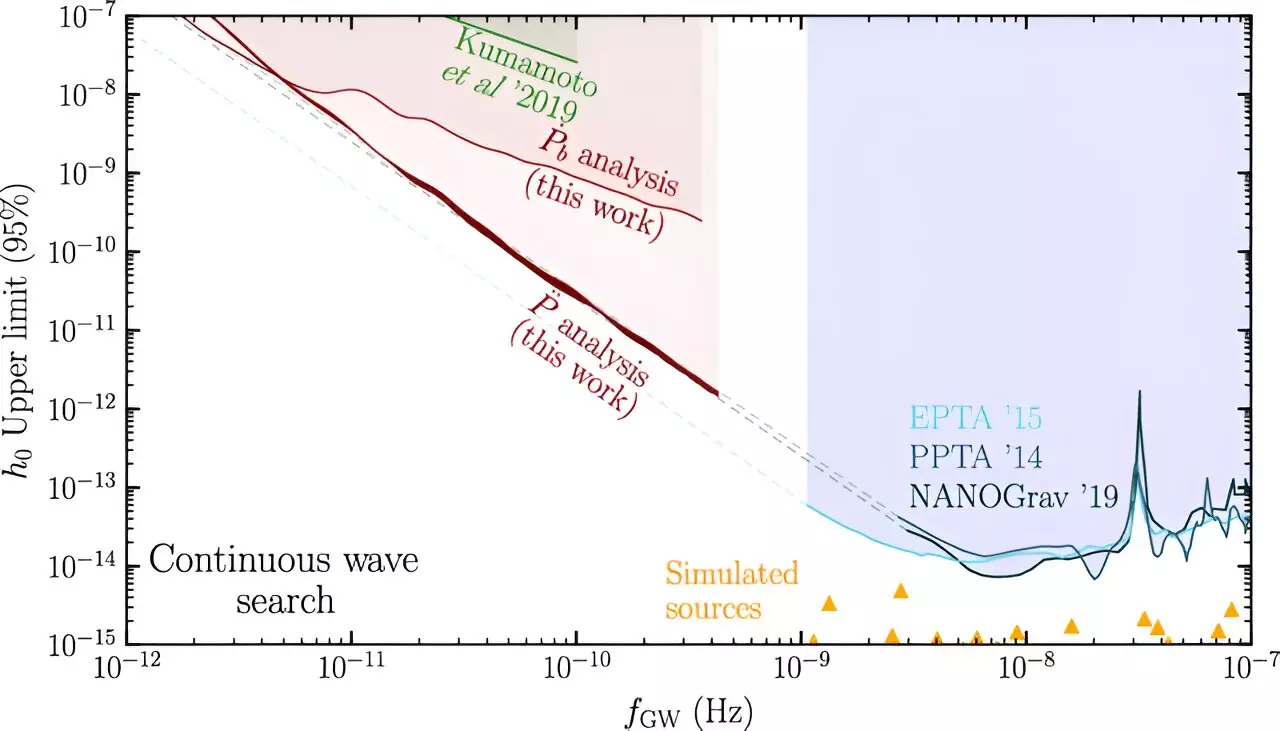The study of gravitational waves has opened up a new frontier in the field of physics, allowing researchers to delve into the mysteries of the universe. A recent breakthrough by a team of physicists has brought a method to detect gravity waves with such low frequencies that they could potentially unlock the secrets behind the early phases of mergers between supermassive black holes, which are considered the heaviest objects in the universe.
The method developed by the team is capable of detecting gravitational waves that oscillate at incredibly low frequencies, as slow as once every thousand years. This is a significant advancement in the field, as it is 100 times slower than any previously measured gravitational waves. The waves that are being detected have traveled from the farthest corners of the universe, shedding light on cosmic events that have taken place billions of years ago.
The new detection method is based on analyzing pulsars and neutron stars that emit radio waves at highly regular intervals. By studying the arrivals of these pulses and looking for a gradual slowdown, researchers are able to uncover new gravitational waves with frequencies as low as 10 picohertz, a significant improvement from previous efforts. This increase in the “hearing range” for gravitational waves allows for a deeper understanding of the origin and nature of these waves.
The detection of gravitational waves at such low frequencies opens up a realm of possibilities in understanding the early universe. These waves could potentially be the result of mergers between supermassive black holes, presenting an exciting opportunity to study the behavior of these enigmatic objects that reside at the center of galaxies. Alternatively, these waves may have been generated by cataclysmic events in the early universe, providing valuable insights into cosmic history.
Looking ahead, the researchers plan to analyze newer datasets to further expand their findings. The datasets used in the study were mainly from 2014 and 2015, and with the advancements in technology and observational techniques, there is a wealth of new data waiting to be explored. By running simulations on powerful supercomputers like UF’s HiPerGator, researchers can delve deeper into cosmic history and unravel the mysteries of the universe.
The discovery of slow-oscillating gravitational waves and the development of novel detection methods have paved the way for groundbreaking research in the field of astrophysics. By studying these waves, researchers are on the brink of unlocking the secrets behind supermassive black hole mergers and gaining a deeper understanding of the early universe. The quest to unravel cosmic mysteries continues, fueled by innovation, collaboration, and the relentless pursuit of knowledge.


Leave a Reply